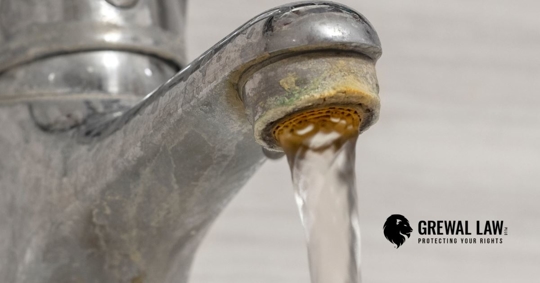Between the years of 1953 and 1987, it is estimated that as many as one million military service men and women, civilian workers, and their family members, called Marine Corps Base Camp Lejeune home. Little did these residents know, that during that time, whenever they took a sip of water; whenever they bathed their child in the sink or tub; whenever they took a family outing to the local swimming pool; they were being exposed to poisonous, toxic water.
Camp Lejeune Water Contamination—How Did This Happen?
Camp Lejeune is considered by many to be the worst water contamination case in the history of the United States. For over three decades, those who lived and worked on the base were exposed to toxic chemicals in the water including trichloroethylene (TCE), tetrachloroethylene (PCE), vinyl chloride, and benzene.
These chemicals were believed to be a product of toxic waste generated by military activities, as well as by local dry cleaners. Indeed, individuals who lived on base have revealed that they witnessed vats of toxic waste being dumped down storm drains by the local laundromat, as well as countless vats of waste being discarded in empty lots, forests, and waterways on base. This waste then seeped into the groundwater and eventually made its way into the water wells, where thousands of unsuspecting individuals drank, bathed, and cooked with the contaminated water.
Was Anything Done About This Toxic Water?
The contamination of the water at Camp Lejeune is believed to have started as early as August of 1953 according to the Agency for Toxic Substances and Disease Registry. However, it wasn’t until sometime between 1980 and 1981 that the Marine Corps tested for certain chemicals in the drinking water per standards set forth by the Environmental Protection Agency (EPA).
The results of this testing revealed that there were “other chemicals [that] interfered with the results” of the tests. It wasn’t until the following year in 1982 that the Marine Corps identified that the chemicals TCE and PCE were in the Camp Lejeune water at levels well above the EPA standards for safe drinking water.
Despite this, however, the Federal Government did not shut down the most contaminated wells on Camp Lejeune until three years later, in 1985. It wasn’t until 1987, nearly seven years after the initial testing, that the water at Camp Lejeune was finally deemed safe to drink. It would be another seventeen years until the Marine Corps finally notified former Camp Lejeune residents of the water contamination. By that point, many former residents were already suffering from devastating health conditions as a result of exposure to the contaminated water.
What Have Been the Lasting Effects of the Camp Lejeune Water Contamination?
The true magnitude of the health effects that resulted from exposure to the contaminated water at Camp Lejeune may never truly be known. However, several scientific studies have been conducted and have concluded that the contaminated water at Camp Lejeune increased the risk of cancer deaths and other chronic diseases. These cancers include, but are not limited to:
- Kidney cancer
- Liver cancer
- Non-Hodgkin’s lymphoma
- Adult leukemia
- Multiple myeloma
- Parkinson’s disease
- Aplastic anemia and other myelodysplastic syndromes
- Lung cancer
- Breast cancer
- Esophageal cancer
In addition to these cancers, several other serious conditions have been associated with the contaminated water such as:
- Scleroderma
- Renal toxicity
- Hepatic steatosis
- Aplastic Anemia
- Female infertility or miscarriage
- Neurobehavioral effects
It is estimated that close to one million people may have been exposed to the contaminated Camp Lejeune water. Many individuals continue to suffer from debilitating health conditions due to their exposure and many others continue to suffer due to the loss of a loved one.
Is There Any Recourse for those Affected by the Camp Lejeune Water Contamination?
While there is no remedy that can right the wrongs that occurred at Camp Lejeune decades ago, there is now legal recourse for those affected by the Camp Lejeune water contamination. In August of 2022, President Biden signed into law the “Honoring Our Pact Act.” This Act also includes the “Camp Lejeune Justice Act of 2022,” which opens the doorway for recovery. Under this Act, individuals may be entitled to recovery if they meet both of the following requirements:
- They lived or worked on base for at least 30 days between the dates of August 1, 1953, to December 31, 1987, and;
- They subsequently developed one of the cancer types or health conditions that have been linked to water contamination (such as, but not limited to, those listed above).
Additionally, this Act permits potential recovery for those filing on behalf of an estate, trust, or incapacitated adult. It also allows potential recovery for those who were in utero at the time of exposure.
The Camp Lejeune Justice Act marks a historic opportunity to honor the men and women who bravely served and gives them and their loved ones a chance to have their voices heard in court. Grewal’s team of personal injury lawyers are ready to fight for you. If you believe that you may be entitled to financial compensation, call (888) 211-5798 or contact us online for a free and confidential consultation.





